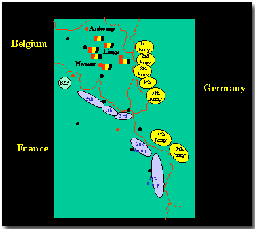Due to the policies imposed by the mercantilist theory, the North American Colony’s economy thrived through the benefits of trade with England.
During the 1650s to the 1750s, a theory was established as to how the mother country, England, would make money off of the colonies. This theory was called mercantilism and the mother country, in this case England, would make money from the colonies by being able to endorse from the money made from the resources. An example of such would be the use of lumber and the use of fishing. The north, for the most part focused on the lumber and the trade involving that. In turn this also resulted in the rise of ship building; now another area of work to do. Because of the weather of the South, the main focus was what would be known to be called “cash crops” such as rice, indigo, and even tobacco.
The mercantilist theory, in turn also gave rise to the trade industry involving the slave trade. Through the mercantilist theory, the colonies would primarily focus on staying near the coast and would focus on the Triangular Trade Route which connected the colonies established in North America. Through this, we saw the increase of exporting of slaves through the middle passage, sugar, rum, and more crops being sold. On the English part, we also saw an increase in the smuggling of money. They ended the salutary neglect that had allowed the colonies to run on their own and introduced the Navigation Acts which added a new regulations to the trading system meaning that the crops would only be sent to England or English colonies.
Britain, for the most part, established an economy in America through the colonies that would last a lifetime. Through the mercantilist theory, the North American colonies would grow and prosper into developing the economy that is present today due to the progress made through trade.
The 1920s
The cause for the cultural changes during the 1920s was greatly attributed to the issues with alcohol and the great influx of new immigrants coming to the United States.
For many Americans, such as religious citizens, alcohol was a source of corruption and misjudgement in society. Prohibitionists, beginning from the Temperance movement involving many women such as Elizabeth Cady Stanton, advocated for the complete removal of alcohol in the country. Shortly before the 1920s, the 18th Amendment was passed that actually did prohibit the distribution, the transportation, and the dealing of alcohol.
Immigration also was a cause for many of the cultural changes in the country. Towards the beginning of the 1920s, there was a great migration of immigrants from both Eastern and Southern Europe into Ellis and angel Island. When they arrived they would live in tenement houses that were basically declared a dump. They were not in humane conditions for families to live in.
Both Immigration and prohibition had their effects culturally on the society. Because of the alcohol and prohibition movement, there began to be an increase in the sale of "bootleg beer" in which illegal beer was both made and sold. This in turn gave rise to the crime rates in the country, and gave birth to the Chicago Gang Wars and the famous Al Capone. Because of this, it led to the repealing of the 18th Amendment in 1933. As for immigration, because of the living conditions and customs of the new immigrants, both Americans and Northern European immigrants felt threatened. They felt that the new immigrants were a threat to their cultures, and in turn tried to Americanize them. Later on they also passed the Immigration Act in which 357,000 were allowed in America total.
The 1920s was a time full of cultural conflicts which in turn divided the nation. Both Prohibition and the great influx of Immigration caused a great number of changes in the country both politically and socially.









